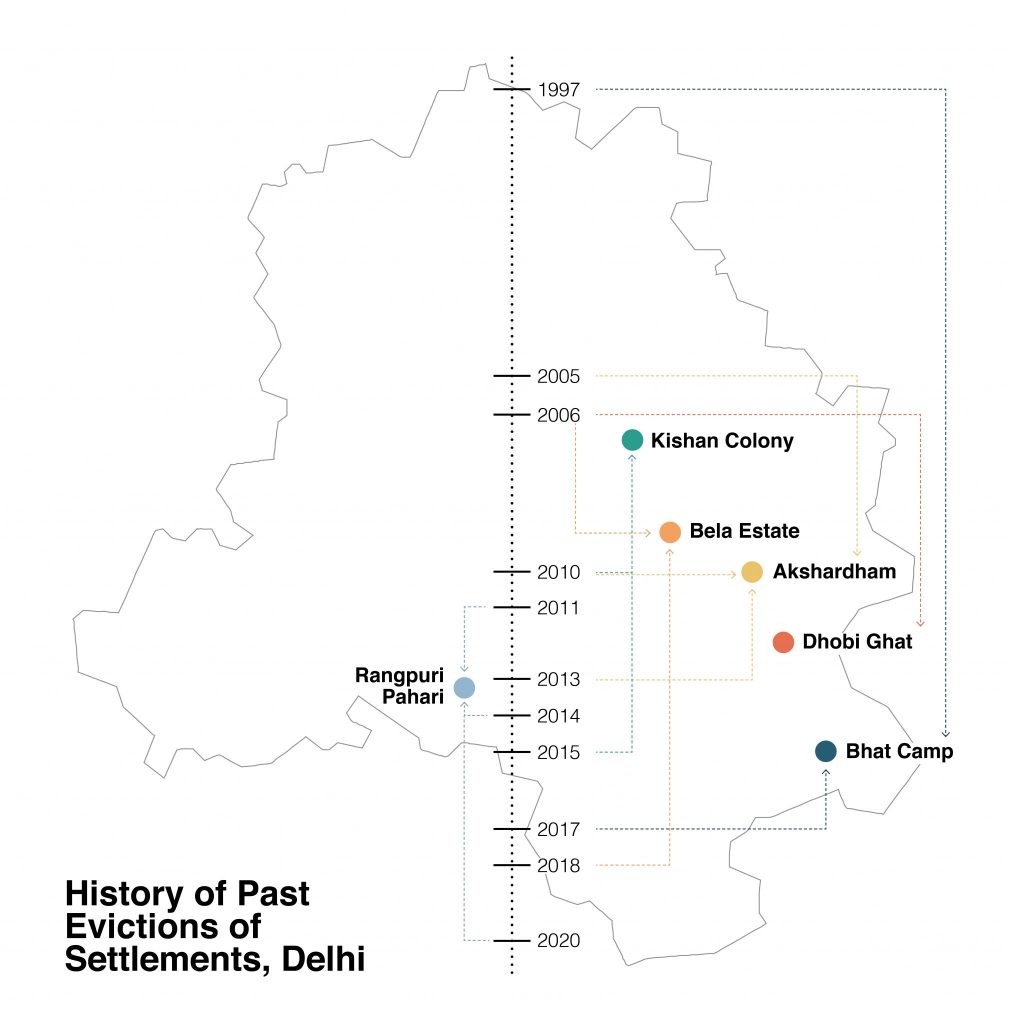The UN Special Rapporteur on the Right to Adequate Housing, in a guidance note issued to the governments of all countries in April 2020, made the following observations in the context of the COVID–19 pandemic:
Evictions are not only inconsistent with the ‘stay home’ policy but forced evictions are a violation of international human rights law, including the right to housing, as are any evictions that result in homelessness. In the face of this pandemic, being evicted from your home is a potential death sentence.
Delhi has a brutal history of eviction from the colonial period. Delhi was declared capital of the nation in 1911 which proved to be a turning point in the process of urbanization in the city. British architect Edwin Lutyens led one of the most ambitious projects of British colonists in India which was to establish Lutyens Delhi. The construction of the Lutyens delhi resulted in eviction of several farmers and pastoralists from the ridges and hills of Delhi. Surprisingly, the descendants of farmers from Raisana Hills demanded compensation under the LARR act as their land was acquired by the British administration in 1912.
During the pandemic eviction were exhilarated to a huge scope. As the capital city, Delhi has particularly pursued goals related to aesthetics and order. A consequence of this has been a continual purging of those residents who are seen to violate these goals, through evictions and housing demolitions. Disturbingly, this cycle of regular eviction and demolition was not broken even during the time of the COVID–19 pandemic, when the world was facing a state of exception. Widespread evictions in Delhi and elsewhere in the country have been reported during both the first wave of COVID-19 in 2020, as well as the second wave in 2021, with at least 245 documented instances between March 2020 and July 2021 resulting in an estimated displacement of more than 2,50,000 people.

Source: India Housing Report 2020
Of late, the Yamuna floodplains have been in public debates and discussions on several occasions, be it the issue of river pollution or sudden increase of construction around it. Courts, Governments, and media houses regularly feature and deliberate on the issues of Yamuna floodplains. As Delhi continues to expand and its demand for residential spaces also increased where the state began to come in conflict with the established settlements. Settlements around Yamuna had to bear the biggest brunt of this city expansion. For instance, one of the large-scale removal of the settlements was Yamuna Pushta settlement. Over 3,00,000 people were forcefully evicted with the neoliberal logic of beautification and bourgeois environmentalism. The neo-liberal logic which plagued the urban planning of Delhi had its hard hammer on Bela Estate slum residents in 2022.
In 2015, the NGT ordered that based on water and soil sampling, the Yamuna water is unfit for cultivation. Following which the Delhi Government ordered a ban on farming around Yamuna floodplains. This left the entire farming community of Bela Estate in a dire state, where their livelihoods and subsistence was at stake. In this context, the current edition of Another City is Possible delved into Bela Estate farmers’ perspectives and lived realities and how they have been impacted by the forceful eviction by the authorities along the Yamuna floodplains.

